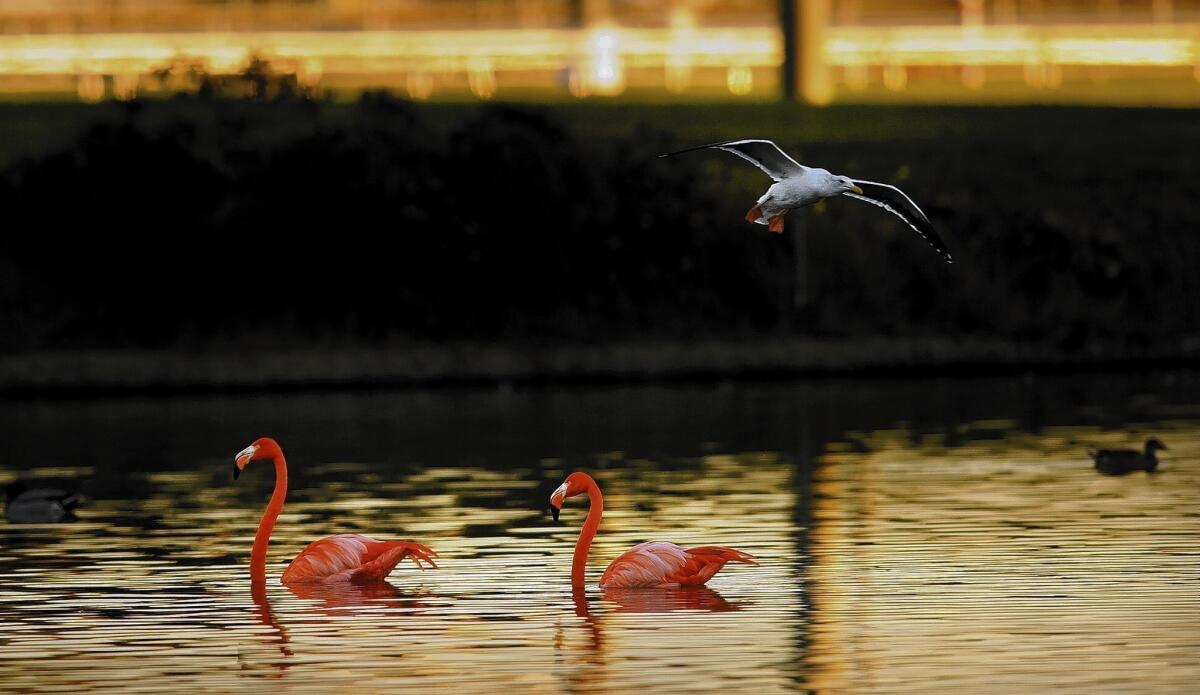Flamingos evade effort to remove them from Hollywood Park

A pair of flamingos might be the last to leave Betfair Hollywood Park when the Inglewood racetrack finally closes Sunday.
The bright pink birds were supposed to make the move to Charles Paddock Zoo in Atascadero, Calif., last week with 10 other flamingos that lived in the infield lake at the 75-year-old track.
But when a crew from Los Angeles Zoo arrived to capture them, five stealthy birds were able to flee through a hole in the mesh trap.
PHOTOS: The final days of Hollywood Park
“It’s not very easy to round up birds,” said Susie Kasielke, curator of birds at the L.A. Zoo. “They get panicky and try to run out.”
On a second attempt, zoo officials were able to wrangle up three of the escapees.
But two remain, and zoo officials said the birds will likely be the last to leave the famed racetrack when the place clears out. They might even get to ring in the new year in the place they’ve called home for the last two decades.
“Flamingos get trap smart,” explained racetrack spokeswoman Sandy Blount of the flamingo-round-up efforts. “We have to give them a little bit of time to forget about it.”
The flamingos are the offspring of the famous flock from the Hialeah Park track in Florida. John Brunetti, the then-president of Hialeah, was also a substantial shareholder in Hollywood Park at the time. He agreed to part with some flamingos in exchange for a seat on the track’s board of directors.
So in 1993, Blount flew to Florida with a bird expert to pick up two dozen chicks. They had a small window for getting the Caribbean flamingos. The birds had to be old enough to leave their mother but too young to fly.
“They were so tiny then,” Blount recalled. “They weren’t even pink. They were gray.”
Blount and the zoo official drove back with the birds. They moved the birds onto an island built for them inside the racetrack, to the delight and puzzlement of bettors in the stands. Some thought the birds were fake and asked why the racetrack was showcasing plastic flamingos, Blount said.
Over the years, the group of 24 dwindled. The park now plans to unite the remaining birds with the eight Caribbean flamingos that have already arrived at the Atascadero zoo. There, zookeepers hope the flamingos form a flock and start breeding.
For Blount, who had watched the flamingos since they were chicks, it’s bittersweet.
“It’s really sad to see them go,” Blount said.
More to Read
Sign up for Essential California
The most important California stories and recommendations in your inbox every morning.
You may occasionally receive promotional content from the Los Angeles Times.










